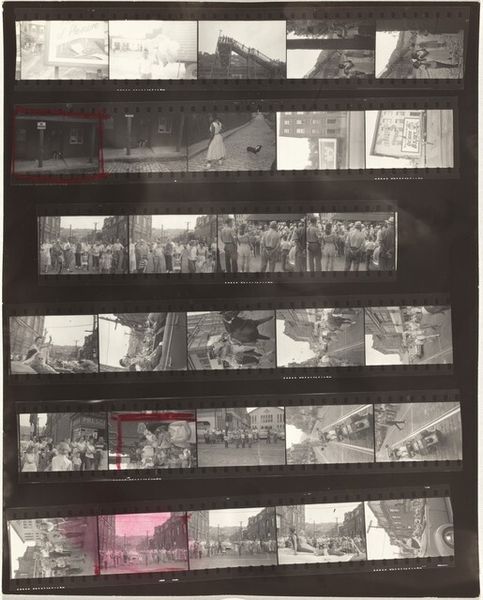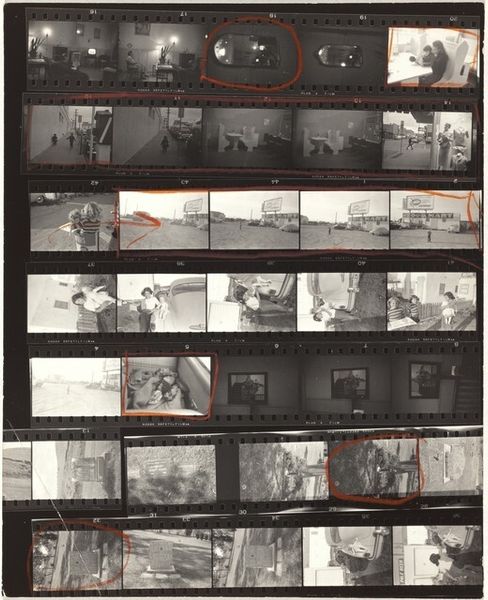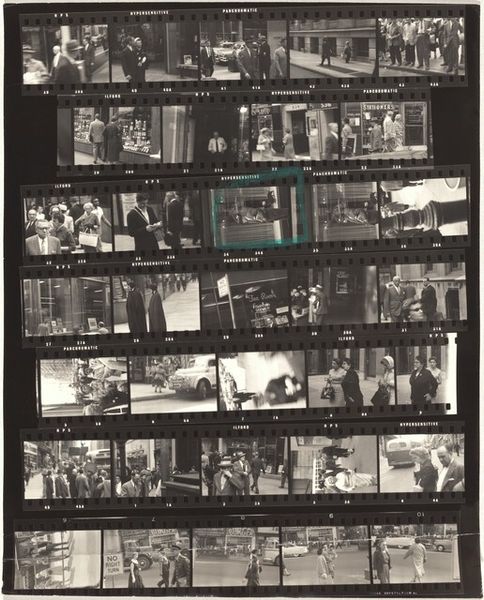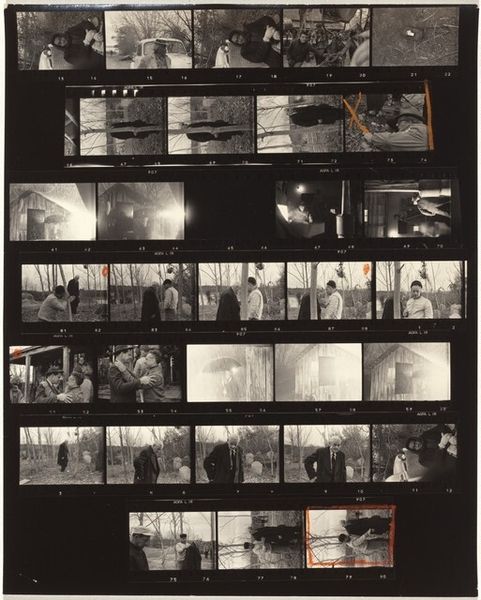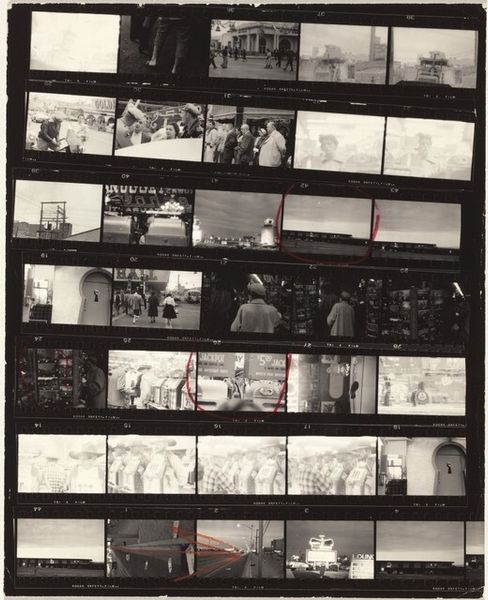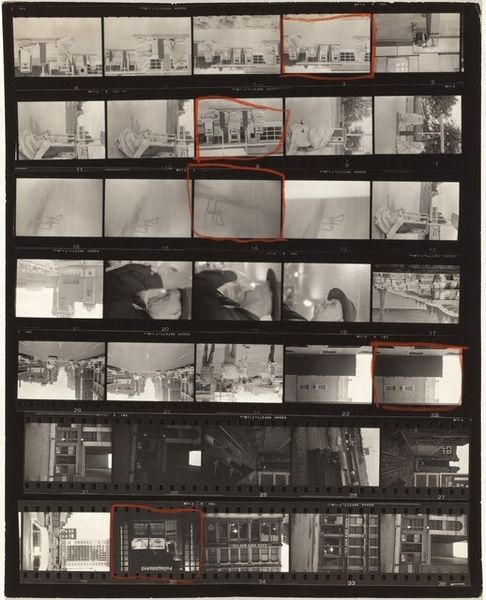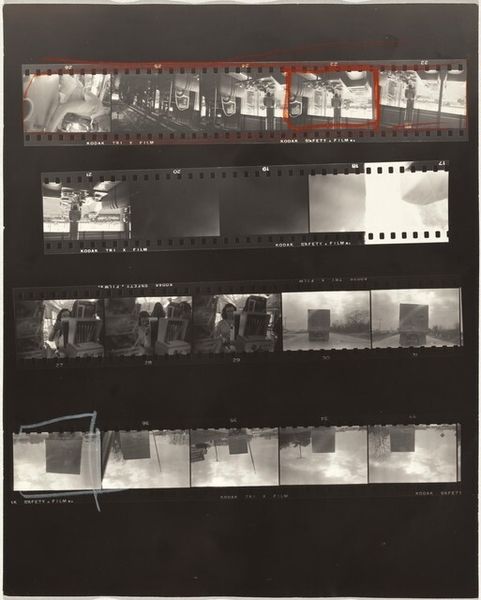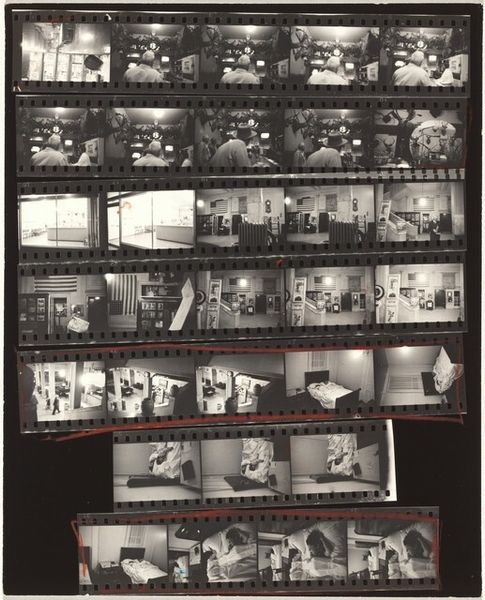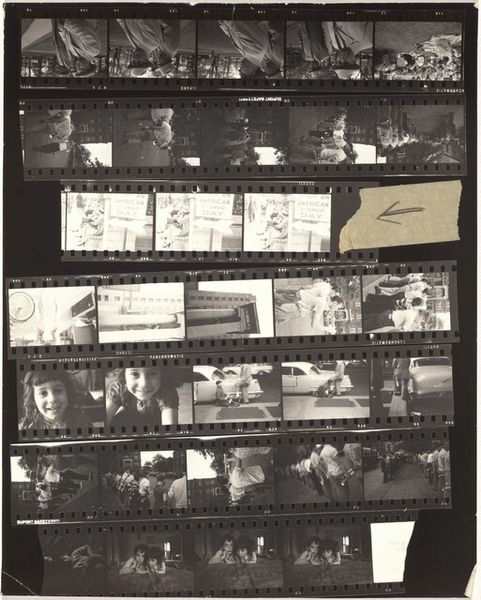
Dimensions: overall: 25.3 x 20.5 cm (9 15/16 x 8 1/16 in.)
Copyright: National Gallery of Art: CC0 1.0
Curator: Robert Frank's "Guggenheim 603--San Francisco," made circa 1956, is a gelatin silver print showcasing a series of frames, capturing street scenes and slices of everyday life. What's your initial take on this work? Editor: It feels like a visual diary, almost chaotic. The composition isn't about a singular, powerful image but the rhythm and contrast between the different shots. There's a gritty, raw quality to the light and shadow, and the lack of clear focus in some frames contributes to this documentary-like feel. Curator: Frank's work during this period, notably "The Americans," challenged the idealized image of America propagated in mainstream media. The Guggenheim grant enabled Frank to crisscross the country and capture an alternative view of American life, one that encompassed alienation and marginalization. This piece really encapsulates his unique visual language. Editor: Yes, this selection is interesting, in many images the arrangement has no apparent thematic association. Technically, the tonal range seems deliberately narrow, avoiding any sense of high gloss or easy clarity. It creates a mood of introspection. Curator: Absolutely, his departure from traditional photographic techniques and subjects sparked heated debates among critics. Frank didn't aim for objective documentation, but to present his own subjective interpretation of American culture and his reaction against conservatism. There are glimpses of consumerism but also moments of isolation. The Guggenheim grant he got to produce “The Americans” was itself something that shook up institutions, highlighting the fact that patronage from them could empower some artists and leave others out. Editor: Looking closely at the texture of the gelatin silver print, I am also thinking that we as viewers are invited into an unpolished reality. A few frames appear blurred, others sharp and detailed. In terms of composition the various juxtaposed subjects break the traditional narrative forms of the photo essay. Curator: These fragments become evidence. A new, modern way of observing a society, the politics and aesthetics of the time. What final thoughts come to mind, looking at the collection of these frozen frames? Editor: I am impressed by its uncompromising portrayal of mid-century life, even in a single sheet of the photographic paper. It is both engaging and distancing. Curator: It certainly invites us to question our perceptions. For me it encapsulates Frank’s career, and more broadly, his role in helping photography become recognized and understood as an artform that makes an essential commentary on American identity.
Comments
No comments
Be the first to comment and join the conversation on the ultimate creative platform.
